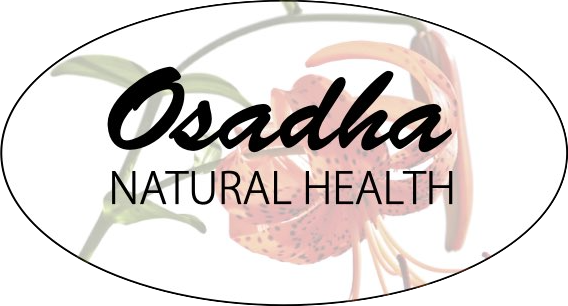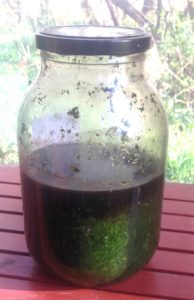Folks looking to be active may think of working on some muscle strength, but let’s not forget about those important bits that actually hold us up and let us move…our various connective tissues. Tendons, ligaments, cartilage as well as our bones are all, technically, connective tissue. Tendons connect muscles to bone, which is why we can move. Ligaments connect bone to bone, which is why we don’t just collapse into a pile on the floor. Joints are a collection of connective tissues (cartilage and ligaments) that also let us move.
How does one strengthen connective tissue? Well, as with muscles, movement helps as long as you don’t get carried away.
Luckily, there are also some wonderful botanicals to help…
Nettle Leaf (Urtica dioica)
I have Nettles on my little balcony garden. Nettle leaf is a rich source of bioavailable nutrients for supporting connective tissue and skeletal health: Calcium, magnesium and phosphorus for bone strength, silica for bone and connective tissue health, and vitamins C and E for cartilage health. For this, Nettles are best used as a tea, vinegar extraction, powder or as a cooked green. Liquid extracts with alcohol won’t contain as many of the minerals.
Nettles have been found in studies to reduce inflammation in multiple ways and even reduced symptoms of arthritis in a clinical trial. Herbalists look to nettles for chronic tendonitis as well as bone strength.
Nettles also have a wealth of antioxidants — vitamins, quercetin, chlorophyll and others — that may help protect connective tissues from damage by free radicals. Because Nettles promote waste elimination, they reduce inflammatory waste deposition in joints, which is a cause of joint pain.
Nettles have robust diuretic activity, so you don’t want to use them 7 days a week forever. Maybe every other day or 1 week on, 1 week off. When in formula with other herbs, they should be fine daily, unless you notice you are starting to feel dehydrated. Skip Nettles if you have a history of kidney disease.
Horsetail/Bottle Brush (Equisetum arvense, E. hyemale)
These prehistoric plants are often found along stream sides. Just make sure it’s a clean stream…not one downstream from, say, a mine. Like Nettles, Horsetail can be found commercially, but make sure what you buy is bright, bright green. Horsetail supplies many of the same nutrients that Nettles do, and so provides much of the same tonic support for our connective tissues.
Note that both Horsetail and Nettles contain silica, and while this is good for our connective tissues, silica isn’t great long term for the kidneys. Thus, taking breaks from them is advised. Another similarity: Like Nettles, Horsetail is great for reducing waste accumulation in joints.
Horsetail is used by herbalists to strengthen weak connective tissue and to speed healing of damaged tendons and ligaments. Like Nettles (yet again!), Horsetail can be helpful for achy joints.
Turmeric (Curcuma longa)
Both Nettles and Horsetail are considered cooling herbs. Turmeric may be more up your alley if you already tend towards being “cold” (literally feeling chilly, or having a slow pulse (fewer than 60 beats per minute if not an athlete) and pale pink tongue are some signs of a colder constitution).
Turmeric is a well-known anti-inflammatory herb with a slew of anti-oxidant components. Also, Turmeric helps promote healthy circulation, bringing important nutrients to your connective tissues to support both function and, if necessary, healing. I prefer Turmeric itself to purified curcumins…fewer digestive side effects, plus, Turmeric contains at least 10 other anti-inflammatory phytochemicals beyond curcumin.
Give your structure some love and get out there to play!
~~~
Content © Dr. Anna Marija Helt, Osadha Natural Health, LLC. Permission to republish any of the articles or videos in full or in part online or in print must be granted by the author in writing.
The articles and videos on this website for educational purposes only & have not been evaluated by the Food and Drug Administration. This information is not intended to diagnose, treat, cure, or prevent any disease or to substitute for advice from a licensed healthcare provider.

